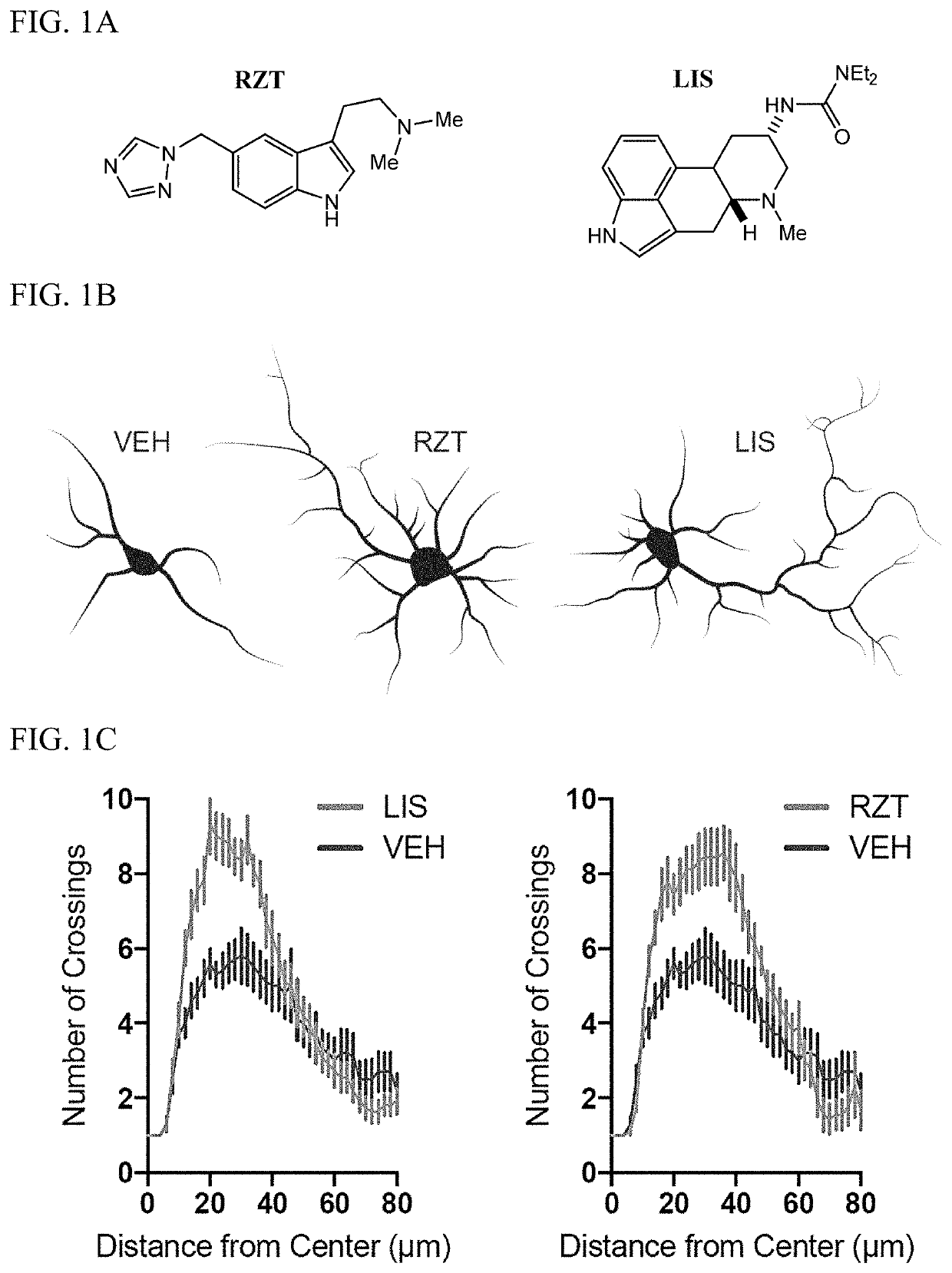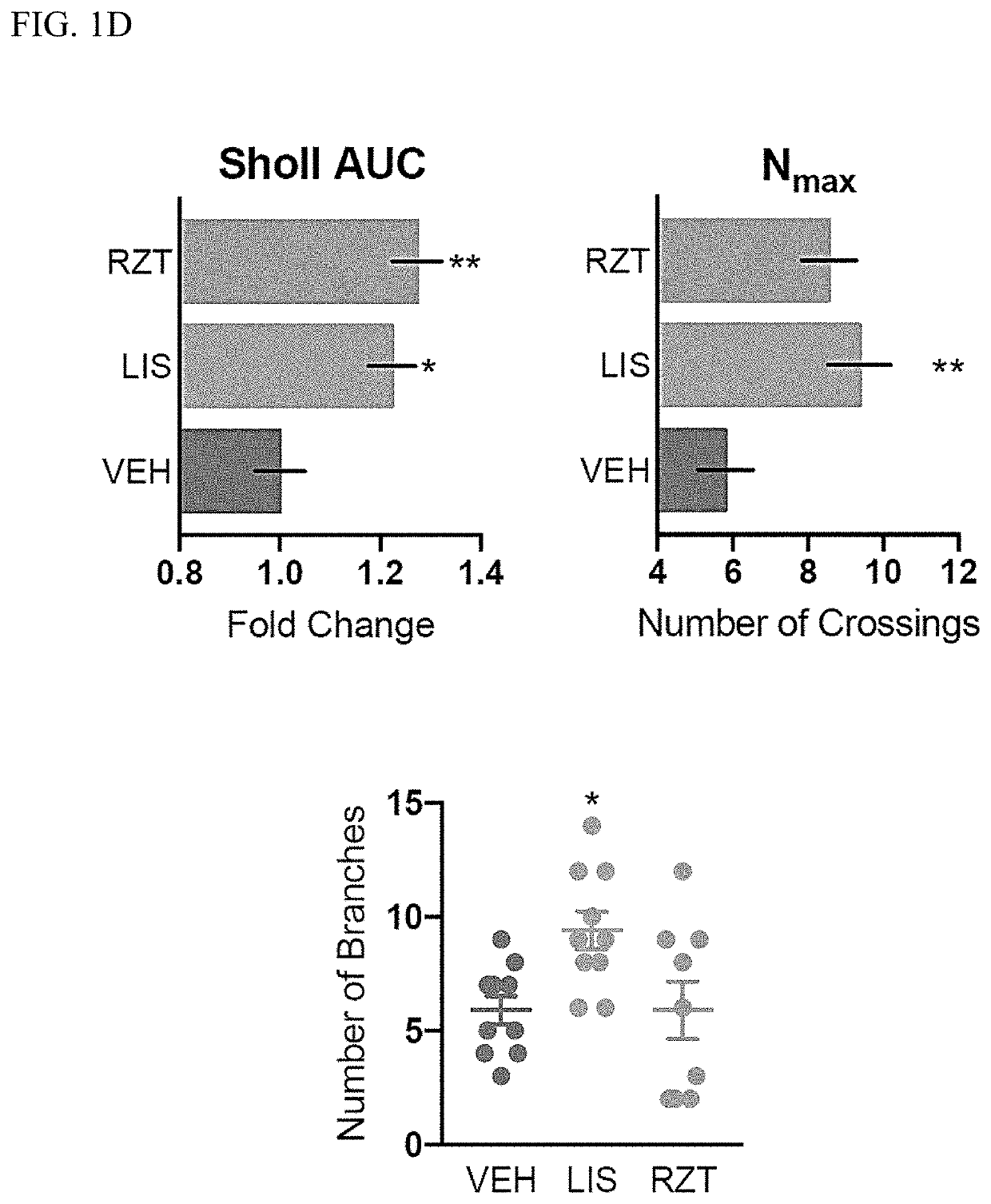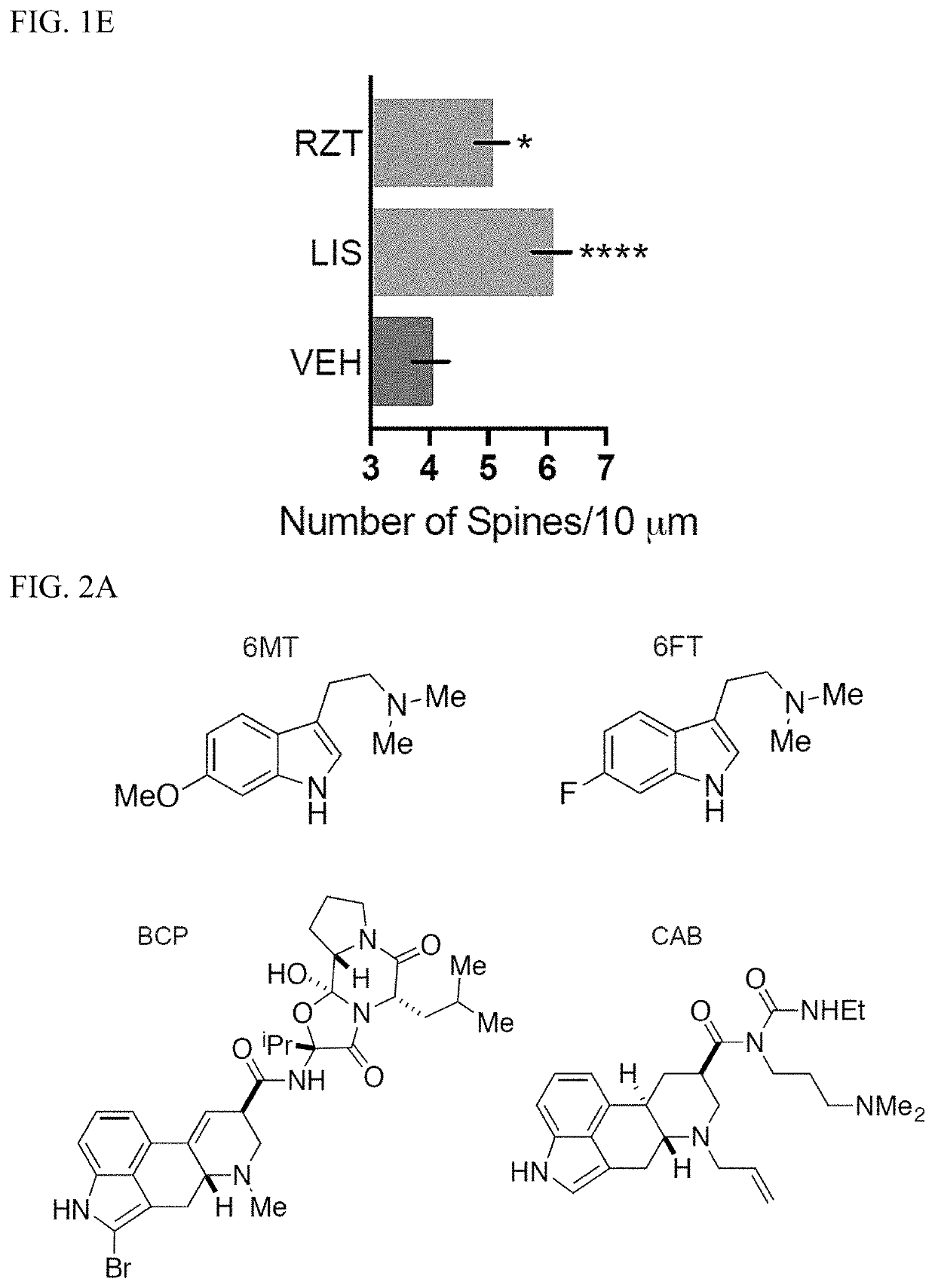Compounds for increasing neural plasticity
a neural plasticity and compound technology, applied in the field of compound for increasing neural plasticity, can solve the problems of reducing the clinical usefulness of patients, affecting the clinical effect, and putting an enormous economic burden on society, and achieve the effect of increasing the neural plasticity of the neuronal cell
- Summary
- Abstract
- Description
- Claims
- Application Information
AI Technical Summary
Benefits of technology
Problems solved by technology
Method used
Image
Examples
example 1
and Reagents
[0325]Chemicals were purchased from commercial sources such as Rizatriptan benzoate salt (RZT, Sigma-Aldrich), Lisuride (LIS, Tocris), bromocriptine mesylate (BCP, Tocris), cabergoline (CAB, Tocris), ANA-12 (MedChem Express), rapamycin (RAPA, Alfa Aesar), ketanserin (KETSN, ApexBio), and brain-derived neurotrophic factor (BDNF, Sigma-Aldrich).
[0326]Several compounds including 6-methoxy-N,N-dimethyltryptamine (6MT) and 6-fluoro-N,N-dimethyltryptamine (6FT) were synthesized via the following procedures, and judged to be analytically pure based on NMR and LC-MS data.
example 1.1
f 6-fluoro-N,N-dimethyltryptamine (6FT)
[0327]To an ice-cold solution of 6-fluoroindole (300 mg, 2.22 mmol) in diethyl ether (7.5 mL) was added oxalyl chloride (0.191 ml, 2.22 mmol, 1 equiv). The reaction was warmed to room temperature and stirred for 30 min. The resulting precipitate was filtered and washed with several portions of ice-cold ether. This material was suspended in ether (14 ml) and cooled to 0° C. followed by dropwise addition of 2M dimethylamine (2.44 ml, 4.88 mmol, 2.2 equiv). The reaction was warmed to room temperature and stirred for 1 h at which point a precipitate had formed. The precipitate was filtered, washed with ice-cold ether, and dried to yield a white solid (271 mg, 52%). The unpurified material was dissolved in 2 ml of THF and cooled to 0° C. To this solution was added lithium aluminum hydride (236 mg, 6.21 mmol, 12 equiv) in ether (5 ml). The reaction was heated at reflux for 12 h, cooled to 0° C., and quenched using isopropyl alcohol until gas evolutio...
example 1.2
Example 1. 2: Synthesis of 6-methoxy-N,N-dimethyltryptamine (6MT)
[0328]To an ice-cold solution of 6-methoxyindole (189 mg, 1.28 mmol) in 4.5 ml of diethyl ether was added oxalyl chloride (0.110 ml, 1.28 mmol, 1 equiv). The reaction was warmed to room temperature and stirred for 30 min. The resulting precipitate was filtered and washed with several portions of ice-cold ether. This material was suspended in ether (14 mL) and cooled to 0° C. followed by dropwise addition of 2M dimethylamine (1.4 ml, 2.83 mmol, 2.2 equiv). The reaction was warmed to room temperature and stirred for 1 h at which point a precipitate had formed. The precipitate was filtered, washed with ice-cold ether, and dried to yield a tan solid (140 mg, 44%). The unpurified material (105 mg, 0.427 mmol, 1 equiv) was taken up in 2 ml of THF and cooled to 0° C. To this solution was added 4M lithium aluminum hydride in ether (0.5 ml, 2.1 mmol, 5 equiv). The reaction was heated at reflux for 12 h. The reaction was then co...
PUM
| Property | Measurement | Unit |
|---|---|---|
| pKa | aaaaa | aaaaa |
| volumes | aaaaa | aaaaa |
| pKa | aaaaa | aaaaa |
Abstract
Description
Claims
Application Information
 Login to View More
Login to View More - R&D
- Intellectual Property
- Life Sciences
- Materials
- Tech Scout
- Unparalleled Data Quality
- Higher Quality Content
- 60% Fewer Hallucinations
Browse by: Latest US Patents, China's latest patents, Technical Efficacy Thesaurus, Application Domain, Technology Topic, Popular Technical Reports.
© 2025 PatSnap. All rights reserved.Legal|Privacy policy|Modern Slavery Act Transparency Statement|Sitemap|About US| Contact US: help@patsnap.com



